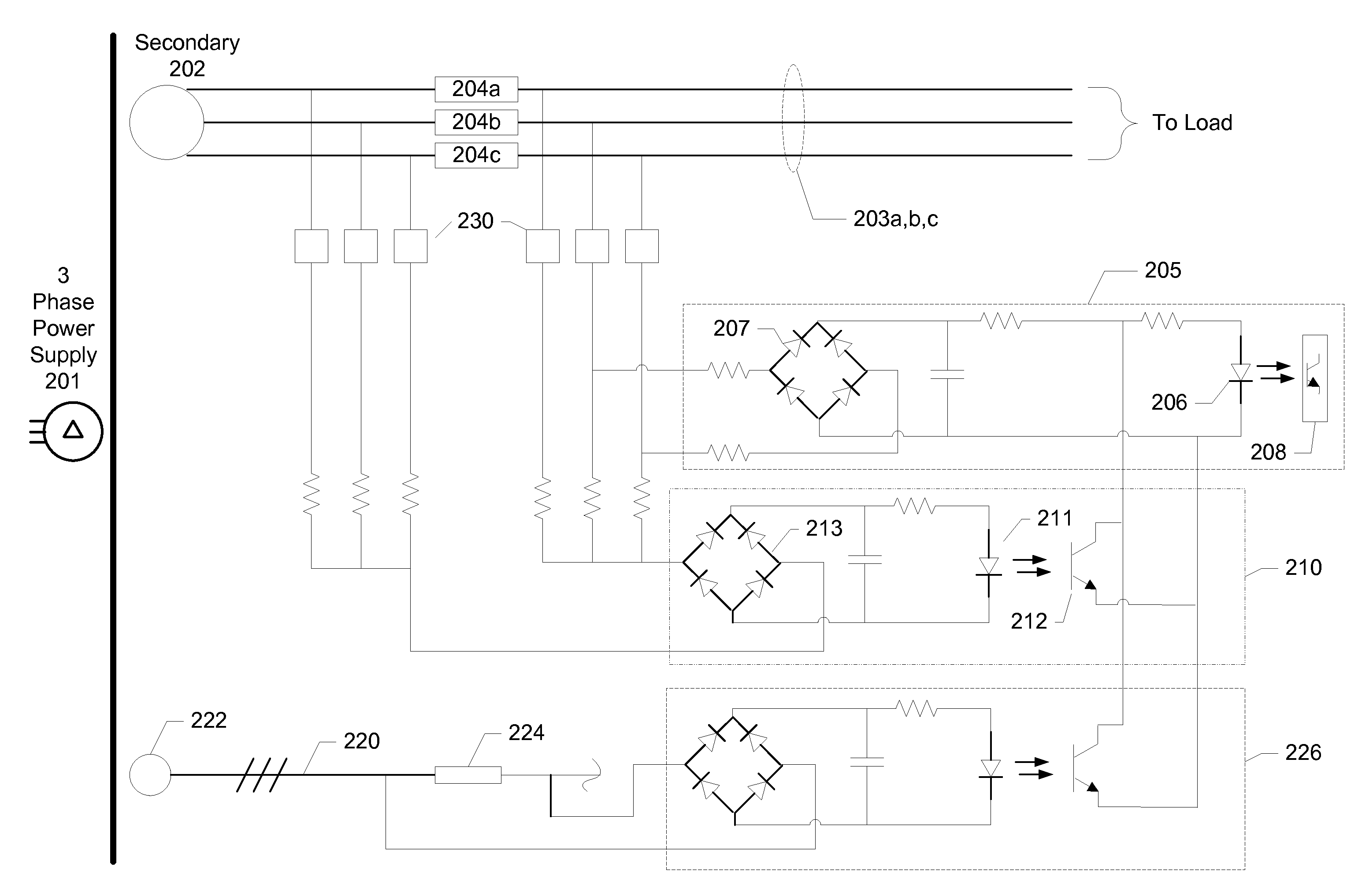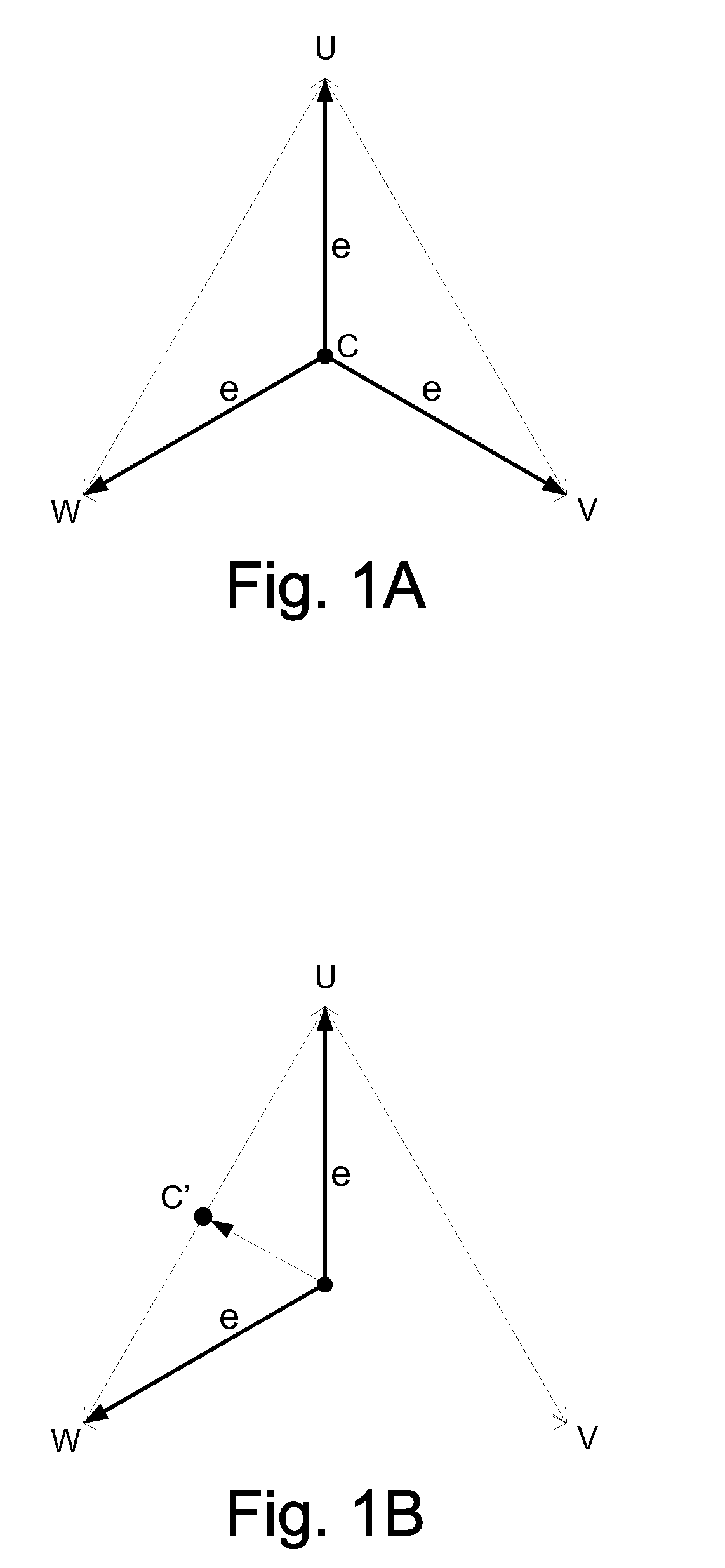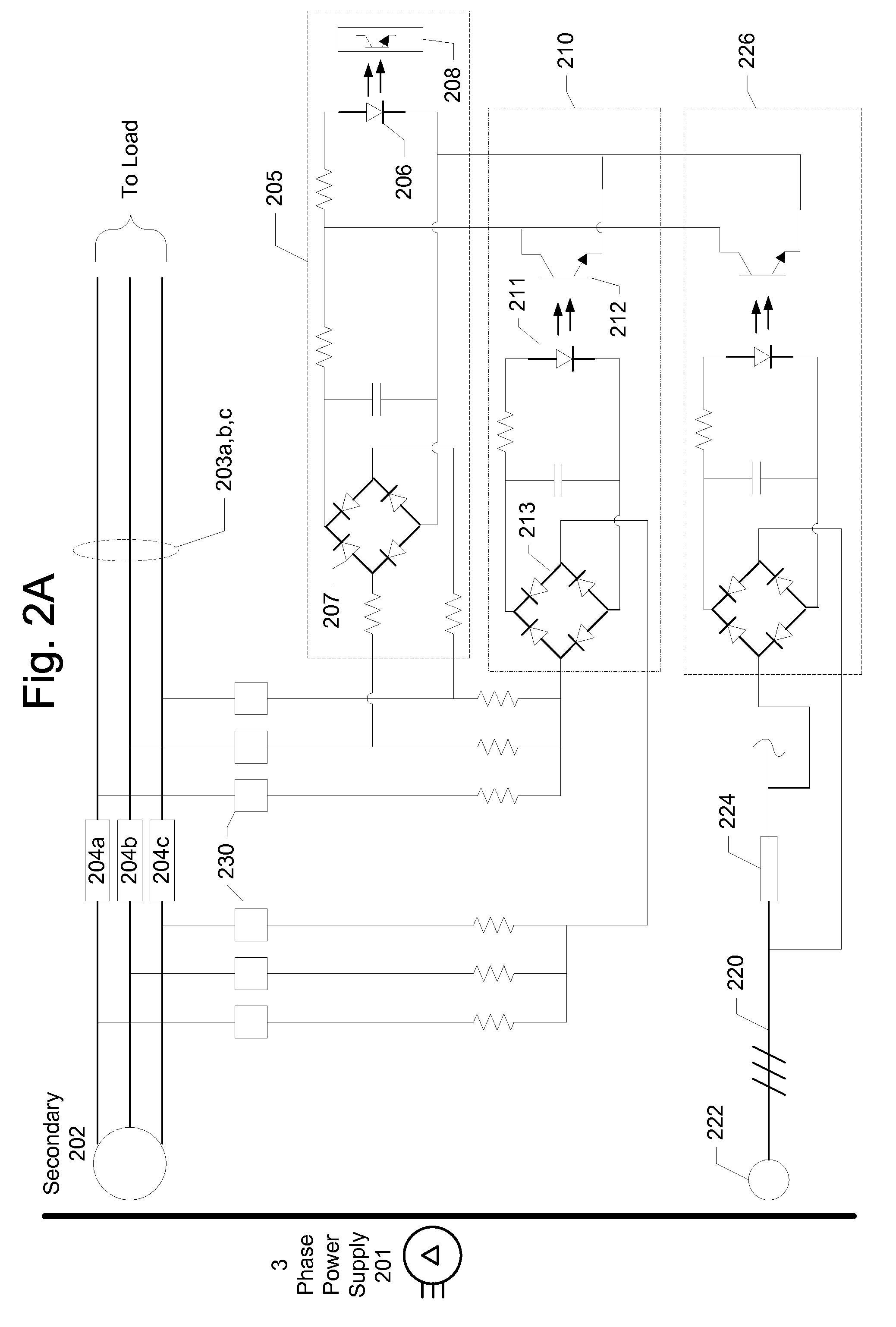Open Fuse Detection by Neutral Point Shift
a neutral point shift and open fuses technology, applied in the direction of fuses testing, testing circuits, instruments, etc., can solve the problems of no longer receiving current, affecting the performance of the system, and literally melting of the current-carrying portion of the fuse, so as to reduce the risk of damage
- Summary
- Abstract
- Description
- Claims
- Application Information
AI Technical Summary
Benefits of technology
Problems solved by technology
Method used
Image
Examples
Embodiment Construction
[0019]In the following description, reference is made to the accompanying drawings, which form a part hereof, and in which is shown by way of illustration various features that may be used. It is to be understood that other embodiments may be utilized and structural and functional modifications may be made without departing from the scope and spirit of the present application.
[0020]As will be described further below, features herein may detect a blown fuse in a three-phase system by monitoring the neutral point of the three phases before and after the fuses. FIG. 1A illustrates a phase diagram showing the angular relationship and magnitude (e) of the three phases (U, V, W), and how the central neutral point (C) is positioned during normal operation. In FIG. 1B, the V-phase line has suffered a break (e.g., blown fuse), and the resulting two-phase system no longer has the same central neutral point (C). Instead, the neutral point has shifted to a different phase / magnitude position. Ci...
PUM
 Login to View More
Login to View More Abstract
Description
Claims
Application Information
 Login to View More
Login to View More - R&D
- Intellectual Property
- Life Sciences
- Materials
- Tech Scout
- Unparalleled Data Quality
- Higher Quality Content
- 60% Fewer Hallucinations
Browse by: Latest US Patents, China's latest patents, Technical Efficacy Thesaurus, Application Domain, Technology Topic, Popular Technical Reports.
© 2025 PatSnap. All rights reserved.Legal|Privacy policy|Modern Slavery Act Transparency Statement|Sitemap|About US| Contact US: help@patsnap.com



